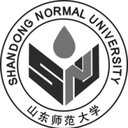2009 pandemic characteristics and controlling experiences of influenza H1N1 virus 1 year after the inception in Hangzhou, China.
Maneno muhimu
Kikemikali
This paper described the epidemiology and controlling experiences of influenza H1N1 in Hangzhou in the past 1 year. A total of 2,078 cases confirmed by real-time quantitative PCR till March 31, 2010, were analyzed by SPSS 12.0 software. During the early pandemic stage, a patient must be tested for H1N1 nucleic acid once he/she had influenza-like symptoms with the epidemiological history in 7 days, and be diagnosed if it was positive. But in the pandemic peak, we made efforts to identify and save severe cases combined with pneumonia or hypoxemia or respiratory failure or septic shock or multiple organ dysfunctions and failure. In general, the prevalence was 2.77/100,000 (2,078/7,510,844); severity rate, 10.44% (217/2,078); fatality rate, 0.48% (10/2,078). The carrier and secondary attack rate were 9.52% (58/612) and 8.66% (53/612), respectively. About 50% of serious cases and 100% of deaths had the basic underlying diseases: cardiovascular diseases, 13.66% (25/217); chronic lung disease, 12.02% (22/217); pregnant, 7.1% (13/217). Of all cases aged from 1 month to 89 years, 52.99% (1,435/2,708) were in the 10-29 years, with most of them distributed in downtown area. The timeline showed two epidemic peaks occurred in September and November 2009, respectively. Furthermore, the hemagglutinin gene remained 99% identical with the American and vaccine strains, but only 70% with the 1947-2008 Chinese strains. In conclusion, Hangzhou pandemic influenza H1N1 was caused by the highly conserved virus, with low prevalence, transmission, and mortality, because we took efficient controlling methods.



